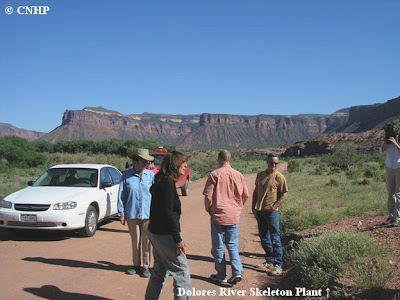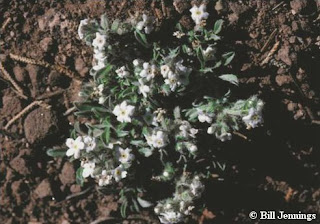The twin summits of Grays and Torreys peaks are familiar to countless hikers who have climbed these two "fourteeners" in quick succession. Named for Asa Gray and John Torrey, authors of the 1838 Flora of North America, these peaks anchor a high elevation massif with four summits that reach over 13,000 feet above sea level. These spectacular mountains are dominated by scree and talus slopes with outcrops of bedrock. Vegetation is limited, consisting of small mossy areas around snow melt rivulets, and a few other microhabitats where opportunistic species have taken advantage of a bit of soil development.
The Grays Peak site is home to at least eight plant species of concern in Colorado, five of which belong to the genus Draba. Draba is the largest genus within the mustard family, both worldwide and in North America. There are currently over 100 recognized species in North America, with the greatest concentration of species in the western United States. These inconspicuous plants are often found at high elevations, and it is common for species to be endemic to local mountain ranges.
The species of primary concern at this site is the globally imperiled Draba grayana (Gray's Peak whitlow-grass, G2/S2). It is endemic to Colorado, and known from fewer than 20 extant occurrences, all with very low total number of individuals documented. Other rare species at the site include:
Aquilegia saximontana (Rocky Mountain columbine, G3/S3)
Askellia nana (dwarf hawksbeard, G5/S2)
Draba exunguiculata (clawless draba, G2/S2)
Draba fladnizensis (arctic draba, G4/S2S3)
Draba porsildii (Porsild's whitlow-grass, G3G4/S1)
Draba streptobrachia (Colorado Divide whitlow-grass, G3/S3)
Ranunculus gelidus ssp. grayi (tundra buttercup, G4G5/S2)
Draba streptobrachia (Colorado Divide whitlow-grass)
Draba exunguiculata (clawless draba)
Draba fladnizensis (arctic draba)






















